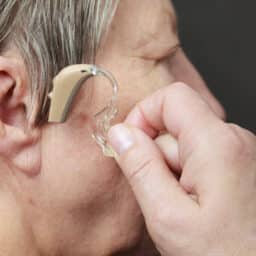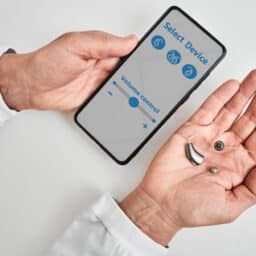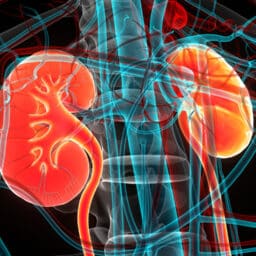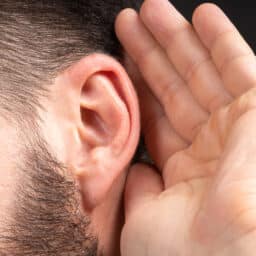A Guide To Single-Sided Hearing Loss

Approximately 20% of the global population lives with some degree of hearing loss. Although it is often talked about in broad terms, hearing loss is a multifaceted condition affecting each person differently. Single-sided hearing loss is one less-discussed facet of the condition you may not have previously considered. Single-sided hearing loss, also called unilateral hearing…
What To Know About Wearing Hearing Aids in Bad Weather

Spring is upon us and with spring comes sudden downpours heavy enough to ruin hair and damage electronic devices. Of the electronic devices we want to shield from rain, hearing aids are some of the most important. Why Is It Important To Keep Hearing Aids Away From the Rain? Hearing aids are delicate instruments with…
What To Know About High Frequency Hearing Loss in Children

High-frequency hearing loss is the inability to understand sounds of certain frequencies, like consonant sounds, and is a result of inner ear damage to the auditory hair cells. This condition not only affects older individuals but can also be present in children. One research study showed 14% of children who use personal listening devices had…
What To Know About Hearing Aid Technology in 2024

Hearing aids provide sound clarity and amplification, improving the quality of life for many; in fact, nearly 28.8 million Americans stand to benefit from using hearing aids. To provide that improvement to quality social connection, hearing aids must be consistently advancing their technologies. Hearing Aid Technology If you’re a hearing aid user or considering hearing…
The Surprising Link Between Kidney Disease and Hearing Loss

When discussing common causes of hearing loss, factors like aging and exposure to loud noise typically dominate the conversation. However, there’s an unexpected contributor to this condition that often flies under the radar: kidney disease. Understanding Kidney Disease Situated just below the ribcage, your kidneys are crucial in filtering blood and eliminating waste products and…
How Does Cogan’s Syndrome Affect Hearing?

Hearing loss can arise from a number of factors, including aging, loud noise exposure, ototoxic medication (medication that damages the hearing mechanisms of the inner ear), physical trauma, illness, inflammatory medical conditions and more. One medical condition that can result in hearing loss is Cogan’s syndrome. What Is Cogan’s Syndrome? Cogan’s syndrome is an autoimmune…
How To Be a Hearing Loss Advocate in The Workplace

Navigating the workplace with hearing loss demands a thoughtful and inclusive approach. Recognizing that one in eight individuals aged 12 or older in the U.S. encounters hearing loss, fostering an environment that embraces diversity is crucial. Building Foundations for Inclusivity Building inclusivity starts by recognizing individuals with hearing loss as unique individuals and getting to…
New Year, New Name: What to Know About Better Speech and Hearing Month’s New Name

The National Association for Hearing and Speech Action (NAHSA) has announced a significant shift for its annual May event. From 2024 on, Better Speech and Hearing Month will be known as “National Speech-Language-Hearing Month. This change aims to eliminate the word “better,” which could inadvertently pass judgment on those living with hearing loss or communication…
How Hearing Aids Can Help With Your Next Move

Approximately 28.8 million adults could benefit from the use of hearing aids. Hearing aids offer more than just improved hearing and provide several other health benefits. Beyond enhancing auditory capabilities, hearing aids play a crucial role in maintaining balance, an essential aspect of overall well-being. The Inner Ear The inner ear consists of the semi-circular…
How Can You Manage Your Tinnitus at Work?

Tinnitus is characterized by a persistent ringing or buzzing sound in one or both ears, even when there is no external sound. According to the National Institute of Deafness and Other Communication Disorders (NIDCD), about 10% of the U.S. population experiences this condition. If you’re among those who have tinnitus symptoms, you might be seeking…





